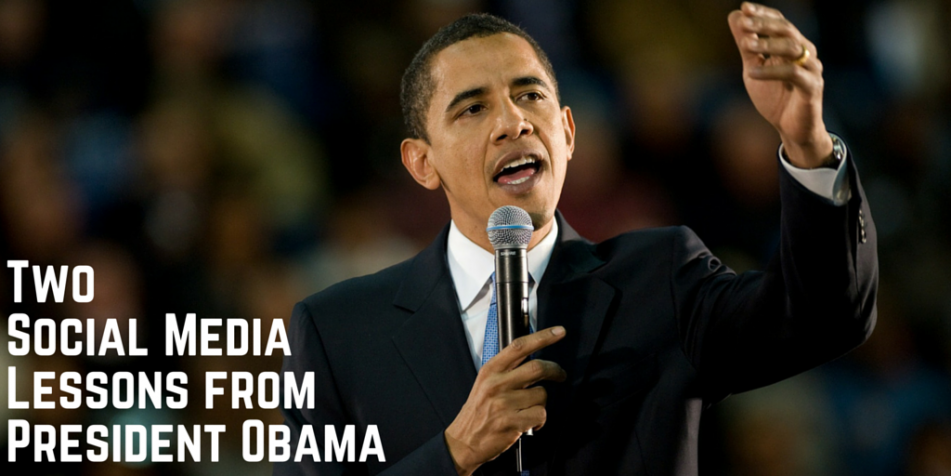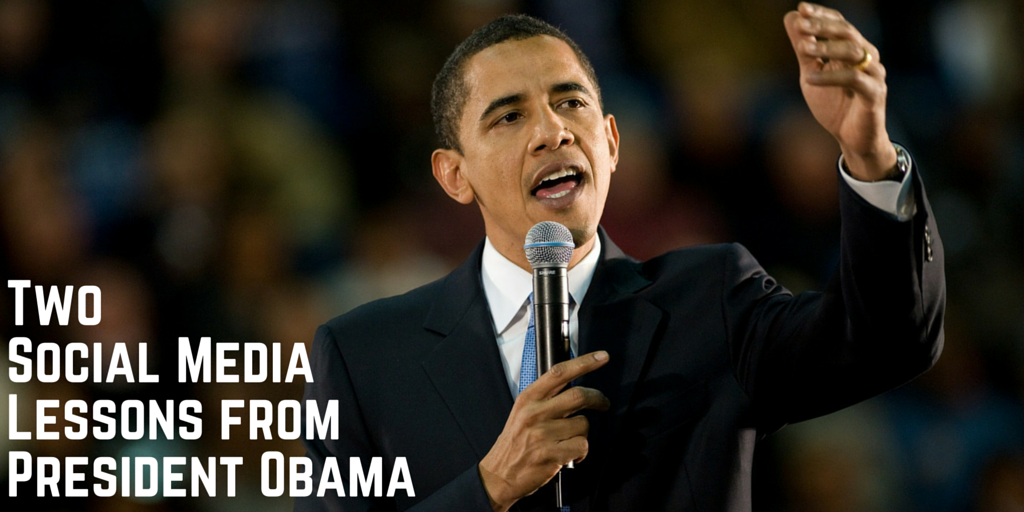It was big news for a few hours but, just in case you missed it, here’s the headline:
President Obama has a Facebook page
Now I know what you’re thinking: didn’t President Obama already have a Facebook page?
Wasn’t he the big social media guy in American politics since, well, ever?
The answers to both of those questions, of course, are yes and yes.
So why is this news?
It’s because the Facebook page that opened just this month is facebook.com/potus. And for good measure, he also opened up a Twitter account at twitter.com/potus.
He’s not transitioning from one handle (facebook.com/barackobama and twitter.com/barackobama) to another.
Instead, he has opened accounts for the office of the President that will be left in the capable hands of the next person to take control of the Oval Office when his second term concludes.
In other words, along with the relatively low paycheck, the constant stress, and the ability to impress only about half of the people at any one time will come social media accounts.
There are lessons in what President Obama and his administration have done by opening up social media profiles for the office of the president (note the handle – POTUS – is the abbreviation for President of the United States) that are separate to the President’s personal accounts.
Lesson 1: Control Your Accounts
The American government’s move to create and secure the POTUS handle on key social networks tells you a lot about the importance of these networks for communicating with the American people.
But it also tells you that the communications team at the White House understand the importance of controlling key social media and internet assets associated with the Office of the President. While the White House is not a traditional business, their strategy makes sense for small and large enterprise alike.
Consider a business that has a CEO with a high profile and a strong social media presence. During the CEO’s time heading up the business he tweets, posts, pins, and shares about the business, garnering attention and building a strong fan base and group of followers. And then one day the CEO decides to leave the company, and the now ex-CEO takes his social media accounts, their followers, and all that social connectivity, too. The business is now left without one of their strongest advocates and the audience that had been curated over those years as chief.
When a business doesn’t control the account that is being used to spread their message online then they run the risk of losing all of those fans, followers, and connections when the account holder cuts their ties. Maybe it’s a CEO who leaves or maybe – like President Obama – there’s a constitutional restriction on serving more than eight years in the job. Whatever the case, the business needs to own the accounts that the charismatic leader uses to communicate, else it’ll depart just as quick as the Obama family from the South Lawn in January 2017.
In a nutshell? A business’s social media accounts should be owned by the company, not the employee.
Lesson 2: Separate the Official Voice from the Personal Voice
President Obama speaks with the authority of his office even when he’s not in the Oval Office. Even on his limited downtime – a family vacation at Martha’s Vineyard, a weekend out of Washington at Camp David – he’s never really off the clock.
Such is the life of the leader of the free world.
But there are also times when President Obama will want to speak with a voice that is more personal and less presidential. The biggest time is still to come – when he leaves office – but there are also times when he is speaking as a political leader in the Democratic Party, or as a father to his children, or we might even imagine a time when he wants to click ‘like’ on a Facebook post as an individual without implying anything about US foreign policy.
Businesses need to be able to make this same separation of powers between the personal and the business accounts.
As explained in Lesson 1, partly this can be achieved by having a separate, non-personal account for the business that can be temporarily handed to a CEO, a CMO, or a marketing and communications team, but never entirely ceded for life. In addition, it’s also important for the company to have an official communications channel that cannot be confused with any other channel.
This is a reason why Toyota USA has a national corporate Twitter account for official corporate communications. Yet every Toyota dealer, service center, official parts supplier, and mechanic specialized in the Japanese giant’s automobiles is going to have a Twitter account, too. The corporate account is the official voice of the company, while the individual accounts speak with a more personal, more local voice.
In a nutshell? Separate social media profiles let you speak with different voices so that official communications are never confused with personal opinions.
Conclusion
When one of the most powerful men in the world makes a move online its worth taking a close look, and when that move is opening a new social media account on a platform he’s been active on for nearly a decade it’s worth spending a few minutes asking why.
The White House understands that the person in the Oval Office is only ever a temporary resident, and that the real power of the office is the office of the president itself. So, too, should a business understand that their people can leave and so it is worth having business social accounts instead of relying on a term-limited leader to never, ever leave.
President Obama has offered some good lessons for businesses with this savvy social move, and those businesses should heed his example.
Have you got your company social media accounts in order, or are you all over the place? Ever had someone walk away with the keys to your social castle? Let us know in comments below or on Twitter!



10 Comments
315888 639050Have you noticed the news has changed its approach recently? What used to neve be brought up or discussed has changed. Its that time to chagnge our stance on this though. 303527
Your enticle helped me a lot, is there any more related content? Thanks! https://www.binance.com/en/register?ref=P9L9FQKY
Sutter Health
520090 739452So, is this just for men, just for girls, or is it for both sexes If it s not, then do females want to do anything different to put on muscle 353516
739238 947530This article gives the light in which we can observe the reality. This is quite good one and gives in-depth details. Thanks for this good write-up. 67108
512257 476676I must spend some time studying more or understanding more. Thank you for magnificent information I was on the lookout for this information for my mission. 920378
There is definately a lot to find out about this subject. I like all the points you made
it’s awesome article. I look forward to the continuation.
I really like reading through a post that can make men and women think. Also thank you for allowing me to comment!
This is really interesting You re a very skilled blogger. I ve joined your feed and look forward to seeking more of your magnificent post.